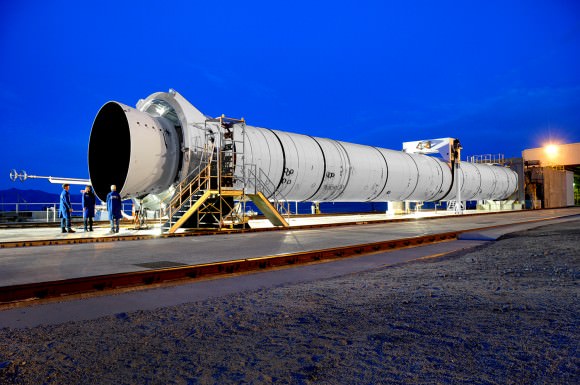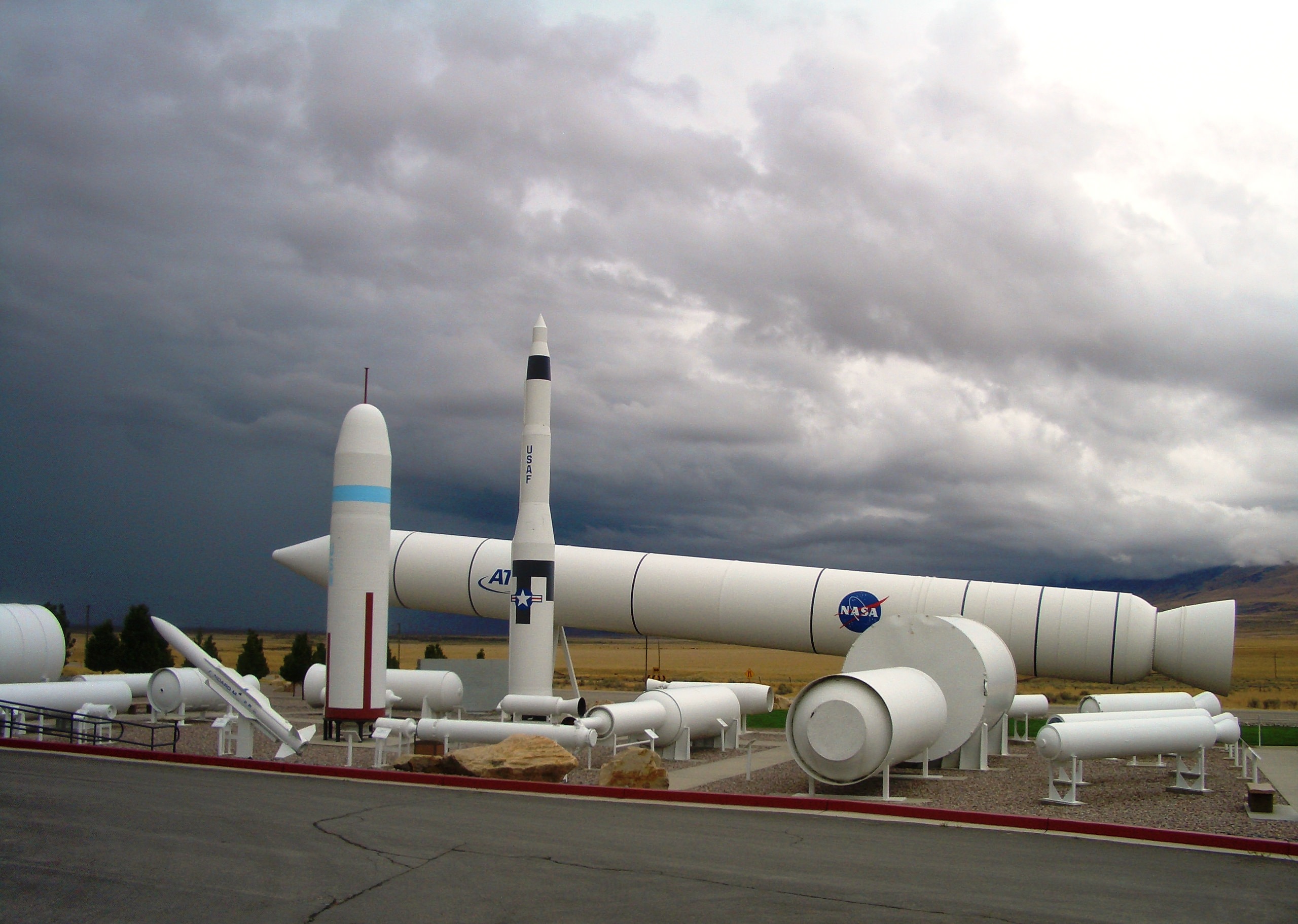The deserts of Promontory, Utah came alive with fire as NASA and Alliant Techsystems (ATK) tested the Development Motor-2 (DM-2). The five-segment, first-stage of the Ares rocket was activated at 9:27 a.m. MDT on Aug. 31. The still morning air surrendered its silence to the sound of unleashed technological thunder. The surrounding countryside was bathed in the colors of flame as a huge plume of hot exhaust and smoke shot out the back of the solid motor. However, ATK was racking up another successful test – to a system with a future in doubt.
The DM-2 is a test-article for the Ares family of rockets, which as part of the Constellation Program, has been targeted for cancellation. President Obama has worked since the beginning of this year to scrap almost every element of the Constellation Program. These plans to transform the U.S. manned space program have cost him support across the country – and within his own party.
Obama’s new agenda for NASA caused a strong Congressional reaction, with two separate bills drafted countering the White House’s proposal. These bills are attempting to seek a “middle-ground” between the “program of record” (Constellation) and the new Obama plan. Both the House and Senate issued competing (and radically different) bills. As it currently stands, NASA has no clear path forward and is kept in a holding pattern until the future of U.S. manned space flight is determined by lawmakers in Washington D.C. This leaves the fate of the Ares family of rockets up in the air.
[/caption]
Despite concerns about what ATK’s future may hold – company personnel remained optimistic. They cite the fact that in terms of technical expertise and know-how, few companies can compete with the experience that the Maryland-based rocket manufacturer has.
“In terms of harnessing this kind of energy, it’s a very challenging engineering task,” said Charlie Precourt, a four-time shuttle astronaut and ATK’s vice president and general manager of Space Launch Systems. “The skills required to complete these engineering tasks is being addressed by the decision-makers, to ensure that the critical skills and the performance capabilities that we have build up over many years endure into the next generation.”

ATK meanwhile continues to work on other components of the Ares and Orion systems. The Launch Abort System (LAS), parachute system for the upper Ares upper stage, and Attitude Control Motor (ACM) are all built by ATK and tested by the firm’s technicians and engineers.
The DM-2 test was conducted to gain data on some 53 designs incorporated in this system. Some of the elements tested include the redesigned rocket nozzle, new insulation used in this design and the motor casing’s liner. When activated the DM-2 produced an estimated 3.6 million pounds of thrust – equaling 22 million horsepower. The motor had 760 instruments incorporated into it these instruments worked to collect vital information regarding the rocket’s performance when it was fired. This makes the test fire of the DM-2 the most heavily-instrumented solid rocket motor test in NASA history.

The horizontal ground test firing is what is known as a “cold motor” test. This is accomplished by chilling the DM-2 down to 40 degrees F. This is done to measure how the motor performs at very low temperatures. The test also was held to prove out design specifications of new materials used in the motor joints.
These new elements will eliminate the need for the joint heaters that are currently used. (these heaters were required in the 4-segment version of the motor’s design). It is hoped that with the addition of these new modifications weight will be dramatically reduced, launch operations will be simplified and the overall system will be far less complex.
DM-2 is a combination of Solid Rocket Booster (SRB) segments that have flown on 57 shuttle missions total. These segments are recycled after every mission. Once they have been jettisoned from the space shuttle they are recovered out in the Atlantic Ocean by recovery ships (named Freedom Star and Liberty Star). From there, they are shipped back to ATK’s plant where they are broken down into segments again and refurbished for the next mission.
ATK highlighted that most space-faring nations utilize solid rocket motors for their space flight programs. The U.S., Japan and Europe all incorporate solid rocket into their launch vehicles.
“If you look at the physics of putting something in space, you have to get to this magic speed of 17,500 miles-per-hour,” said Michael Bllomfield, three-time shuttle astronaut who now ATK’s vice president of Johnson Space Center (JSC) Operations. “the most efficient launch profile uses a combination of solids and liquids.”
The day prior to the test ominous storm clouds had encircled ATK’s test site. The rain and lightning that followed seem to underscore the condition in which the solid rocket manufacturer now finds itself. The following day they went about their duties despite the uncertainty that they currently face. With the shuttle program coming to an end and the future use of solid rockets placed in doubt, only time will tell if the company that provided the U.S. space program with its heavy lift capabilities for the past 30 years can weather the storm.

